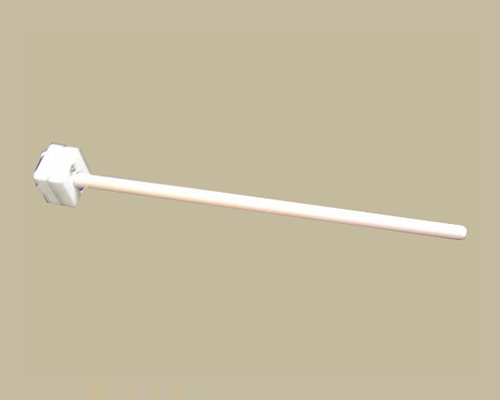High Temperature Furnace Thermocouple
SentroTech is a leading provider of thermocouples used for high temperature furnaces in laboratory settings. Our thermocouples are highly accurate furnace temperature sensors designed for a variety of commercial and industrial applications.
Learn More About Tube Furnaces

How A Thermocouple Works
SentroTech furnace thermocouples are electrical temperature sensors used to gauge a wide range of temperature changes in high temperature laboratory furnaces.
Two different electrical conductors form electrical junctions to produce a voltage at a single junction. This causes a thermoelectric effect to interpret varying measurements of temperatures.
For commercial and industrial applications, Sentro Tech offers the following high temperature furnace thermocouples:
- Type K Thermocouple
- Type S Thermocouple
- Type R Thermocouple
- Type B Thermocouple
Type K Thermocouple
Most commonly used, the Type K furnace thermocouple measures temperatures from -300°F to +2460°F. This magnetic thermocouple is typically made of nickel and changes its output when the material reaches its Curie point at around 365°F. The Type K thermocouple for high temperature furnaces functions very well in oxidizing atmospheres, except when exposed to hydrogen (which can cause green rot).
Type S Thermocouple
High-temperature applications that reach up to around 2900°F use the Type S furnace thermocouple. Lower temperature processes also use Type S thermocouples because of its accuracy and stability. Like all platinum-type thermocouples, always use a ceramic tube to protect the Type S thermocouple.
Type R Thermocouple
Like the Type S, the Type R furnace thermocouple is used in high-temperature applications reaching up to 2900°F. However, never use the Type R in reducing atmospheres. As an all platinum-type, a ceramic tube should always protect Type R thermocouples.
Type B Thermocouple
Temperature applications of up to around 3200°F use the Type B furnace thermocouple. Use this platinum-type of thermocouple in oxidizing or inert atmospheres with applications ranging from 1000°F to 3100°F. Never use Type B thermocouples in reducing atmospheres. Always use a ceramic tube to protect this type of thermocouple.
Select The Right Thermocouple For Your High Temperature Furnace
If you’d like more information on selecting the correct thermocouple for your high temperature furnace, contact SentroTech today. Our expert team is here to help you find all the high temperature furnace parts and equipment you need.
Address: 21294 Drake Rd., Strongsville, OH 44149 Phone: (440) 260-0364
Copyright Sentro Tech
